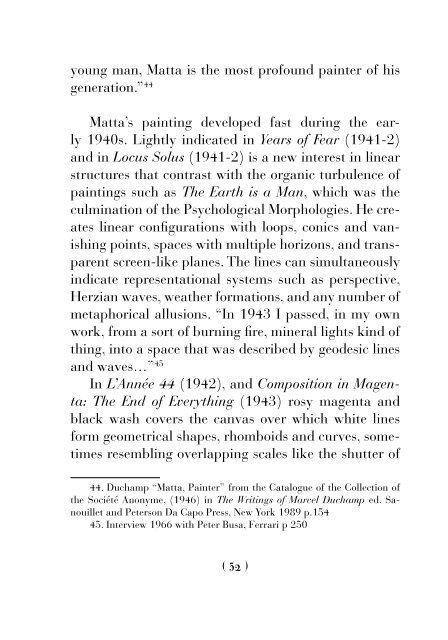Matta-Duchamp
Illustrated catalog featuring full page color illustrations and rare documentary photographs. Published by Galerie Gmurzynska in June 2018 to accompany a special cabinet exhibition at Art Basel 2018. The book includes texts by Professor Dawn Adès and Norman Rosenthal. It coincides with a broader re-evaluation of the importance of Matta internationally as well as of the influence of Duchamp on the work of 20th century artists. Edited and introduced by Krystyna Gmurzynska and Mathias Rastorfer. Essays by Dawn Adès and Norman Rosenthal. Historic interview excerpt by Robert Motherwell. 90 pages with 7 illustrations. Softcover. ISBN: 978-3-905792-09-6
Illustrated catalog featuring full page color illustrations and rare documentary photographs.
Published by Galerie Gmurzynska in June 2018 to accompany a special cabinet exhibition at Art Basel 2018. The book includes texts by Professor Dawn Adès and Norman Rosenthal. It coincides with a broader re-evaluation of the importance of Matta internationally as well as of the influence of Duchamp on the work of 20th century artists.
Edited and introduced by Krystyna Gmurzynska and Mathias Rastorfer.
Essays by Dawn Adès and Norman Rosenthal.
Historic interview excerpt by Robert Motherwell.
90 pages with 7 illustrations.
Softcover.
ISBN:
978-3-905792-09-6
Create successful ePaper yourself
Turn your PDF publications into a flip-book with our unique Google optimized e-Paper software.
young man, <strong>Matta</strong> is the most profound painter of his<br />
generation.” 44<br />
<strong>Matta</strong>’s painting developed fast during the early<br />
1940s. Lightly indicated in Years of Fear (1941-2)<br />
and in Locus Solus (1941-2) is a new interest in linear<br />
structures that contrast with the organic turbulence of<br />
paintings such as The Earth is a Man, which was the<br />
culmination of the Psychological Morphologies. He creates<br />
linear configurations with loops, conics and vanishing<br />
points, spaces with multiple horizons, and transparent<br />
screen-like planes. The lines can simultaneously<br />
indicate representational systems such as perspective,<br />
Herzian waves, weather formations, and any number of<br />
metaphorical allusions. “In 1943 I passed, in my own<br />
work, from a sort of burning fire, mineral lights kind of<br />
thing, into a space that was described by geodesic lines<br />
and waves…” 45<br />
In L’Année 44 (1942), and Composition in Magenta:<br />
The End of Everything (1943) rosy magenta and<br />
black wash covers the canvas over which white lines<br />
form geometrical shapes, rhomboids and curves, sometimes<br />
resembling overlapping scales like the shutter of<br />
44. <strong>Duchamp</strong> “<strong>Matta</strong>, Painter” from the Catalogue of the Collection of<br />
the Société Anonyme, (1946) in The Writings of Marcel <strong>Duchamp</strong> ed. Sanouillet<br />
and Peterson Da Capo Press, New York 1989 p.154<br />
45. Interview 1966 with Peter Busa, Ferrari p 250<br />
( 52 )

















